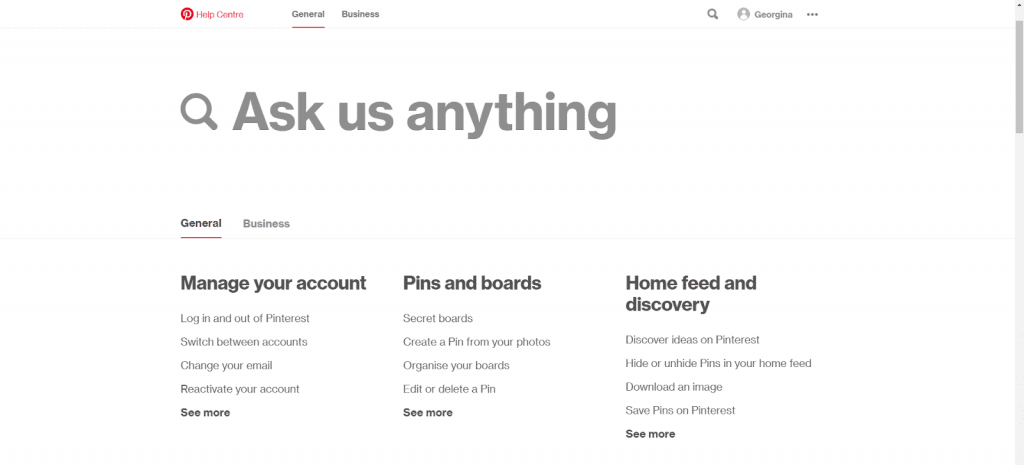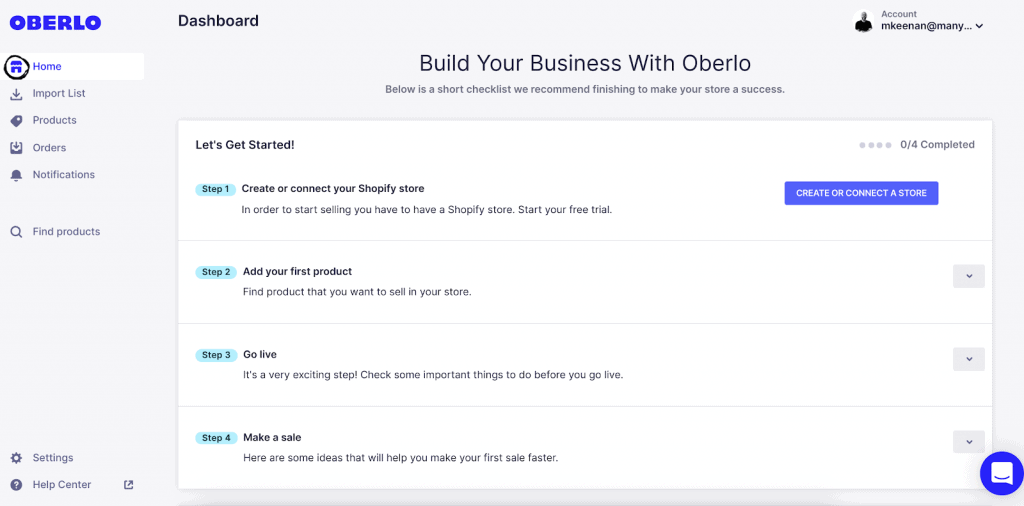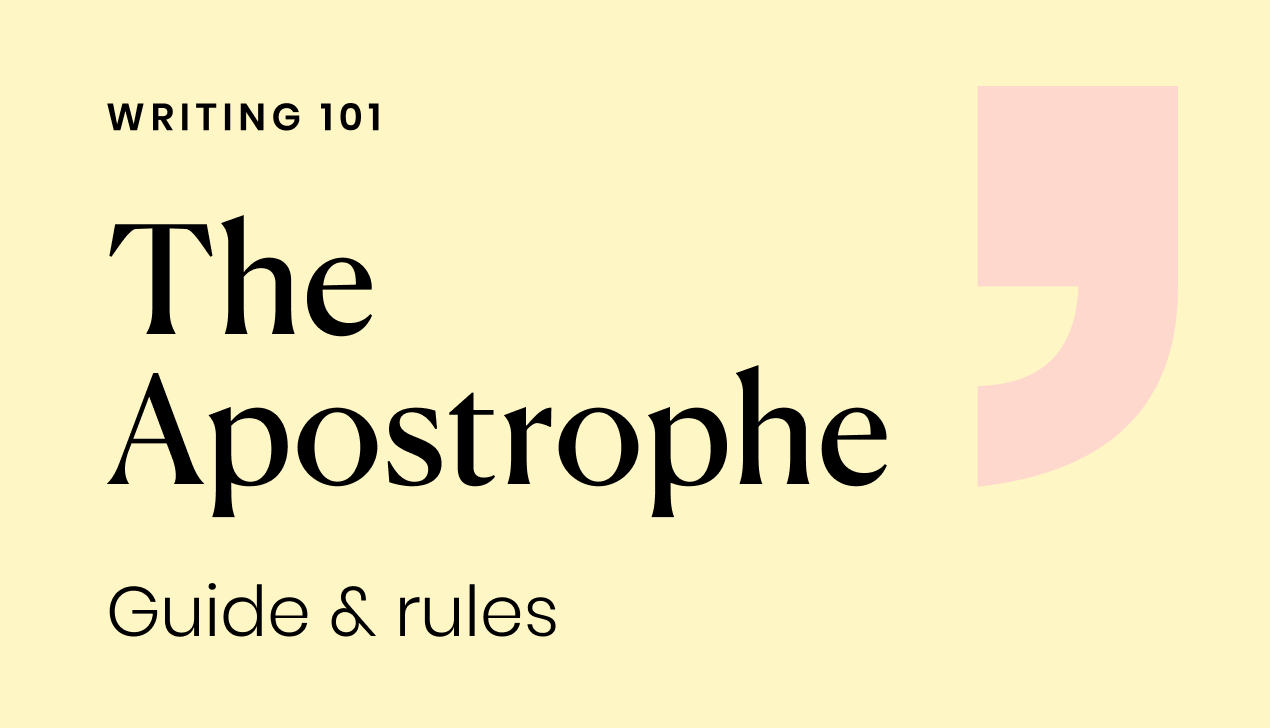Words at work
– 21 min read
How to improve your business writing style

Business writing skills don’t come naturally to everyone, but they’re often a significant part of working professionals’ lives. Luckily, writing better at work can be learned. And if you’re willing to do the work, you can easily improve your business writing style over time.
Most people know that you should cover your bases with things like correct grammar and punctuation as well as following the accepted practices of the medium you’re using, whether it’s a business email to a prospective client, a follow-up email, or a report to your boss. But fewer know the individual practices that come together to form clear, actionable, and comprehensible pieces of business writing.
In this guide, you’ll learn how to improve your business writing style with quick tips and key document examples you can use in your day-to-day business.
Table of contents:
- Four types of business writing
- Nine business writing tips to improve your skills
- Five business writing examples to steal
- Business writing FAQ
Four types of business writing
The style and tone of your business writing is determined by the type of writing you’re about to take part in. There are four key types:
Instructional
When your aim is to give the reader information that will help them complete a task, it’s called instructional writing. To make the information easy to follow and instructive, you could follow a step-by-step format. This business writing style is often written with a neutral, competent tone.
Examples of instructional writing include:
- User manuals: guides for software or physical products, like an instructional manual for an oven. They usually require specialist knowledge and can lean on technical writing (learn more about technical writing).
- Specifications: technical documents that feature critical information about a certain process or product (i.e. specifications for a video game so the user knows their computer can run it).
- Memos: given to a certain group of people in a company to help them complete specific tasks
Informational
Informational business writing is an essential part of running an organization, ensuring you comply with legal and contractual obligations. It’s often used in the business world when you need to provide evidence that you’ve completed a certain activity. This business writing style is written with a neutral, professional tone.
Examples of informational writing include:
- Reports: reports are created to capture work completed, record incidents, finalize projects, or prove that you’ve investigated a problem. They are written in a way that allows the reader to understand the content and make informed decisions.
- Financials: written statements that offer a financial overview of the company during a specific period. An accountant may ask for this type of business writing to support a claim for tax relief or something else that requires financial evidence.
- Minutes: a write-up of a meeting, including a record of the discussion, decisions, and assignments for the attendees.
Persuasive
Persuasive business writing is when you want to convey information that convinces the reader (usually the customer) that you’re offering the best value. Such content is typically linked to sales and follows a brand’s style guide. It can be written with an informal or professional tone.
Examples of persuasive writing include:
- Press releases: an announcement written for journalists and media sharing new information. The writing should persuade the reader to share the content through their own channels.
- Sales email: a business email sent to a list of people (subscribers) that pitches a product or service. It usually contains short and punchy sentence structure and word choice.
- Proposals: a professional document created to inform a specific client about a product or service. Proposals include an overview of the project, benefits, a timeline, fees, and Terms & Conditions.
Transactional
You probably do transactional writing every day. Sending an email to your colleague is a form of transactional writing (yes, in business writing, email counts too!). So are more official modes of communication, such as letters, forms, and invoices. This business writing style is usually succinct and purposeful.
Examples of transactional writing include:
- Emails: snapshots of information you send to share details of an event, discuss work, or offer crucial updates with your colleagues or clients. Depending on the business, they can be written with an informal or formal tone.
- Official letters: such as dismissal notices, invoices, recommendation letters or even a complaint letter. They can be written with a more professional tone than emails and are often sent by HR employees.
Now that you understand the different types of business writing, let’s look at how you can improve your skills as a professional writer.
Nine business writing tips to improve your skills
Here are nine business writing tips to help you improve your business reports, professional emails, and business communications.
1. Identify your primary goal in business communications
Before approaching any kind of business writing exercise, you have to know what you want to say. Sometimes your key point will be obvious, but other times, it will require some thought.
Either way, setting a primary goal is an important first step for gathering your thoughts into a coherent message. And it’s a major component to successful business communication and writing in general. If you’re clear about your primary objective, you can more easily stick to that point, avoid going off on tangents, and get your message across in a way that’s easily digested by the reader.
One way to quickly ascertain your goal is to sum up the purpose of your message in a single sentence. If it’s extremely short or can’t be contained in a single sentence, you may need to consider alternative methods, like a quick conversation or breaking up your content into more than one email.
2. Focus on your readers’ needs and professional goals
Your audience will dictate so much of how your message is conveyed, so you must understand who they are and what they need. Good writers focus on their audiences’ needs and wants rather than their own. That way, the reader has something to grab hold of, and act on, if that’s the goal.
Example 1: How to write a business email that clearly states your objectives and expectations
If you’re writing an email to an employee about third-quarter business goals, the part they play in moving the company forward will be most relevant. In that situation, however, it would be easy to provide more context than is necessary. But providing too much information can make for a lengthy and less effective piece of writing that requires the reader to dig through the information that may not be relevant to them.
Example 2: How to write a business email that solves a client’s question or problem
On the other hand, if you’re writing to a customer or client, you should aim to answer their questions about your product or service so that they can make an informed decision. Providing valuable context can mean the difference between a quick “yes” or a slow, drawn-out conversation that fades away. The easier you can make things for your reader in your own writing, the more inclined they’ll be to help you accomplish your business goals.
Providing valuable context can mean the difference between a quick ‘yes’ or a slow, drawn-out conversation that fades away.Click To Tweet3. Cut to the chase in business writing: Focus on clarity over quantity
Clarity is easily muddled when it comes to the written word, but there are a few ways to easily and quickly address this aspect of business and professional writing (same goes for your personal writing too).
Avoid jargon and overusing acronyms
Jargon can easily creep into both your business writing style. And while it can make conversations a bit faster when speaking with others who are well-versed in your field, business jargon can create confusion with those who aren’t. Again, you have to be aware of whom you’re talking to, and make a judgment call. If you’re writing for someone new to your industry, use words that have a clear, universal meaning.
Shorten and simplify sentences
For better business writing, edit the length of your sentences to hone the clarity of your business communications. For example, you may write “as a result” when “because” is just as accurate. Keeping each sentence to one idea can also help you avoid confusing the reader with run-ons or convoluted compound sentences.
While you’re at it, be sure to look for holes in the context or message — like places where you took a logical leap, or forgot to include information about how something is relevant to the main topic. That way, each sentence and paragraph can support the others in creating a coherent message.
4. Streamline structure and organization
Sometimes it’s difficult to know where to begin with business communications, especially if you’ve got pages and multiple decks of business research, analysis, and creative ideas. In general, it’s best to focus on a primary idea or topic. This prioritization helps you set expectations for the reader and get to the point without delay.
As a baseline, you should include things like transitions from paragraph to paragraph, or sentence to sentence, to make the words themselves flow more easily. You’ll want to take a top-line approach to the organization, too, if you want your words to be more absorbable.
Break a lengthy email or document into smaller sections
Just as we’re doing in this blog post, we suggest organizing business writing into sections with subheadings and highlights of important information. Include formatting such as line breaks, headers, and short paragraphs to make lengthy copy scannable.
Visually friendly formatting is especially important when you’re talking to someone who doesn’t necessarily have to listen to you, like a prospective client who may not have a lot of time to devote to reading emails.
Again, making it easier for them to understand your writing can help you achieve your goals.
5. Fine-tune your tone and business writing style
Your style and tone in writing dictate how your readers feel. A professional and friendly voice helps foster a sense of congeniality between yourself and your clients and coworkers.
Formal is not necessarily the same thing as professional
Example of formal phrasing:
“Report to me at your earliest convenience.”
vs.
Example of professional yet less formal phrasing:
“Stop by when you have a minute to chat.”
Both of these statements convey the same general message, but the tone is different, due to word choices and their connotations. The first statement relies on formal phrasing and potentially implies a difficult conversation ahead.
The second example sounds friendly and less formal, but still professional. The way you say the things you need to say is important, and it can dictate everything that follows. If you’re not sure how your writing will be perceived, try reading it aloud — what would you think if someone sent you the same statement?
6. Use an active, human voice
Every grade-school English teacher has spouted off one time or another about the virtues of writing with an active voice. And they’re right. As a quick refresher, an active voice is when the subject of a sentence acts on the verb. Passive voice, on the other hand, is when the subject is acted upon by the verb.
Example of using active voice in business writing:
She wrote the business report.
Example of using passive voice in business writing:
The business report was written by her.
In these examples, “she” or “her” is the subject and “wrote” or “was written” is the verb. Using an active voice is key to persuasive business writing. It can be used to create urgency, help with clarity, and is a more effective way to convey information in business communications.
Avoid “robotic” business language
People prefer business writing that sounds like it was written by a human being, not a robot. That means using contractions and sticking to your usual vocabulary. You might think it’s necessary to elevate your prose to get a more professional tone, but your words can easily come off as stilted, and it’s not really necessary to be professional.
You might think it’s necessary to elevate your prose in order to sound more professional, but your words can easily come off as stilted.Click To Tweet7. Include clear calls to action
A CTA (call to action) is a valuable yet underused tool in business and professional writing. A CTA communicates exactly what you need and when you need it.
For example: In an email, you might want to place a CTA in two areas: the subject line, to alert the recipient about an impending deadline, and within the message itself, to help contextualize it.
Unlike the goal or focus of the email, it doesn’t have to come right at the beginning. In fact, including a CTA too early can be jarring and give a tone of impatience. Including a CTA (e.g., “Please sign the agreement” or “RSVP here”) on a separate line at the close of the email, for example, can be a useful way to wrap things up without running into the issue of tone.
The CTA itself should be specific and actionable. Saying, “Please get this to me soon” is more abstract and less effective than saying, “Please send the signed files by noon tomorrow (5/22).” A clear assignment and deadline are easiest to fulfill, so providing one will give you the best chance of getting what you need on time.
8. Aim for brand consistency in your business writing style
Creating a consistent brand story is another tenet of good writing at work. After all, what is a brand, if not the cumulative reputation of a company? And that’s often conveyed through writing.
Whether you’re talking to a client, or a coworker, staying within the bounds of your company message creates a more unified system. It simplifies things for everyone by setting expectations for both what lens to view information through and how best to convey that information to others. That means it has a significant influence over how you want the reader to feel and the tone you employ.
Use standardized writing templates that you can tweak to fit your needs
Templates can help you hit on keywords and phrases within the context of specific kinds of conversations. For example, you may find that you often send prospecting emails to clients, you’ve likely found yourself repeatedly writing out explanations about what the company aims to do and its desired customer base.
Having a template ready to pull from can save time while making sure you don’t deviate from the desired messaging. Over time, this helps build the brand in a consistent and positive way. Whether you’re using a Google Doc, Salesforce, Marketo, etc., make sure to customize the template to keep things relevant, personable, and coherent.
9. Do a final check
Before you send your writing into the world, or even to a single person, it’s important to remember to do final checks. Even the most skilled writers need some sort of editing to avoid writing mistakes like dropped letters from rewritten sentences or odd word choices that could lead to confusion or tonal issues.
Reading your work out loud, before you hit send, or having someone else give it a once-over, can provide some much-needed perspective and help you see little things that may have slipped through the cracks.
And, of course, don’t forget to run spell-check. Using an AI grammar assistant like Writer will help you spot those mistakes your brain doesn’t compute.
Read our article on common writing errors at work to form your own proofreading checklist.
Five business writing examples
Now you know the different business writing styles and tips, here are some effective business writing examples you can use to inspire your next project and help you learn how to write better.
1. Marketing content
If you’re new to content marketing, you may need to spend time developing new skills in writing persuasive, relevant, and clear content. A key element is understanding your audience: you need to write content that resonates with them, e.g. offering solutions to their problems or insight they can’t get anywhere else.
Marketing content includes:
- Blog posts: content that offers solutions to problems through valuable and relevant information
- Landing pages: a standalone page connected to a marketing campaign that customers land on after clicking on an offer for a product or information
- Web pages: home page, about page, service pages, etc.
- eBooks: long-form content that provides a comprehensive guide on a specific subject
- Social media posts: marketing text or image posts you publish on Twitter, Instagram or LinkedIn
- E-newsletters – emails containing news updates, links to articles, product announcements, helpful advice, etc.
An example of quality marketing content: nordic outdoor clothing retailer, Fjallraven’s landing page:

Active voice in the main headline creates a sense of urgency for outdoor enthusiasts, encouraging them to explore nature. This is directly linked to the company’s products – you can’t explore the great outdoors without proper gear – which has been conveniently placed on the landing page so customers can shop straight away.
Two lessons to take away:
- Be consistent: Connect your words to your images, values, and products.
- Be purposeful: Ensure every word has a purpose connected to your marketing goal
2. Help center
Picture this: a customer wants to use your product but they have a question that’s holding them back. They search for a FAQ or help center but you don’t have one. Thus, the customer journey ends because they can’t get the information they need to move forward.
Avoid losing customers with a well-written, user-friendly help center. They save your existing customers time from calling or emailing you. Instead, customers can find the answer to their problem in a few clicks.
The best help center uses simple and clear writing that guides visitors to a solution to their problem. For example, take a look at Pinterest’s help page:

The ‘Ask us anything’ search box creates a friendly tone that encourages the customer to seek help for their problems. The headings are concise and use keywords and a clear structure to make navigating to the right solution effortless.
Remember, your goal is to offer the path of least resistance when it comes to solving customer problems. Like Pinterest, you can achieve this with clear and concise word choice.
3. Product content
A delightful onboarding experience makes new customers feel like they made the right choice by doing business with you. It also improves customer retention and lifetime value — and if there’s one thing we know about business, happy customers become your top referral source.
If your onboarding content is littered with common grammar mistakes and spelling errors, it might send new customers running for the door.
Take Oberlo for example. The dropshipping supplier company uses clear, well-written text to show users how to get started with the app, and reemphasize the value of their product.

Oberlo breaks everything down and distributes the information slowly. Only asking new users to accomplish one task at a time and providing straightforward instructions on how to achieve it. Use your words to guide your customers every step of the way.
4. Emails
With business writing, emails count too. Problem is, a lot of people don’t bother to proofread a quick email they send to a colleague or client. A few grammar and spelling mistakes never hurt anyone, right?
Wrong. It all counts towards the way you’re perceived as a professional. If you want clients, customers or colleagues to view you as competent, considerate, and businesslike, your emails (or business letters) need to be quality pieces of writing.
When writing business emails, use short and simple sentences to make your writing easy to digest. Busy professionals will most likely scan emails when they’re short on time. Make sure there are no grammar errors or spelling mistakes. And give the recipient clear instructions on what to do next, whether it’s responding to a proposal, booking a call, etc.
5. Press releases
Press releases are newsworthy stories businesses send to different media outlets. The goal of a press release is to get journalists and editors to feature the story in their publications.
If you have a new product or service in the works, you might want to write a press release to get the word out there. They need to be well-targeted with a newsworthy headline, a summary of the news in the opening paragraph, and a compelling quote. They are usually written in the third-person.
A press release typically has seven components:
- Title and italicized subheading to summarize the story
- Location where the news is based
- Two to three detailed paragraphs
- Bulleted facts
- Company description at the bottom
- Contact information
- A “###” to signal the end
Check out Amazon’s in-car delivery press release for inspiration:

This is a great example of persuasive business writing. Amazon starts with an eye-catching headline that summarizes the story. Then clearly identifies the core product benefits and how it helps its customers. If you read the full press release, you’ll notice they also use testimonials from a customer who was given early access to the service—a great way to show the product works.
As a business writing exercise, write your own press release using these different narrative devices.It can be on unicorns or UFOs, the idea is to practice. Once you’ve finished your first draft, check to see if you’ve followed the correct hierarchy of information.
Now you’ve got the business writing skills to shine
As you can see, good writing can help you stand out and shake up the professional world. With what you’ve learned in this guide, you could get a business writing job (like copywriting, technical or academic writing), or use the writing skills you’ve learned to enhance your own marketing and communication skills.
Whatever you decide to do, keep on doing purposeful, focused, and intentional practice with business writing exercises. Practice writing emails, press releases, headlines, product content, whatever tickles your fancy. In time, you’ll become a master of business writing style.
Want to improve your business writing skills today? Sign up for a free trial of Writer.
Business writing FAQ
What is business writing?
Business writing is a type of professional communication written to be direct, purposeful, concise, and clear. Grammar and spelling should always be correct to maintain professionalism.
What is the importance of business writing?
The importance of business writing is to establish credibility and trustworthiness for the company you are writing for. Each piece of writing should be well-written and mistake-free.
How can you improve your business writing skills?
You can improve your business writing skills by reading different forms of business writing, engaging with different styles, practicing using active voice; eliminating jargon, and using a grammar checking tool like Writer.
What are the 10 C’s of business writing?
- Complete: include the when, where, why, who, and how
- Concise: remove redundant words and stock phrases
- Clear: make sure there’s no ambiguity or doubt
- Conversational: write like you’re talking to someone face-to-face
- Correct: use the correct spelling, grammar, and information
- Coherent: write down your thoughts and ideas in a logical manner
- Credible: always check your facts and your sources
- Concrete: avoid using vague words and phrases
- Courteous: use a positive tone and put the reader first
- Considerate: make your writing easy to read and scan
How do I learn business writing skills?
- Take business writing training courses on websites like UDemy or LinkedIn Learning
- Read business writing books like On Writing Well or The Business Writer’s Handbook
- Practice writing every day
- Avoid jargon and fancy business buzzwords
- Study good business writing
- Share your writing with others






